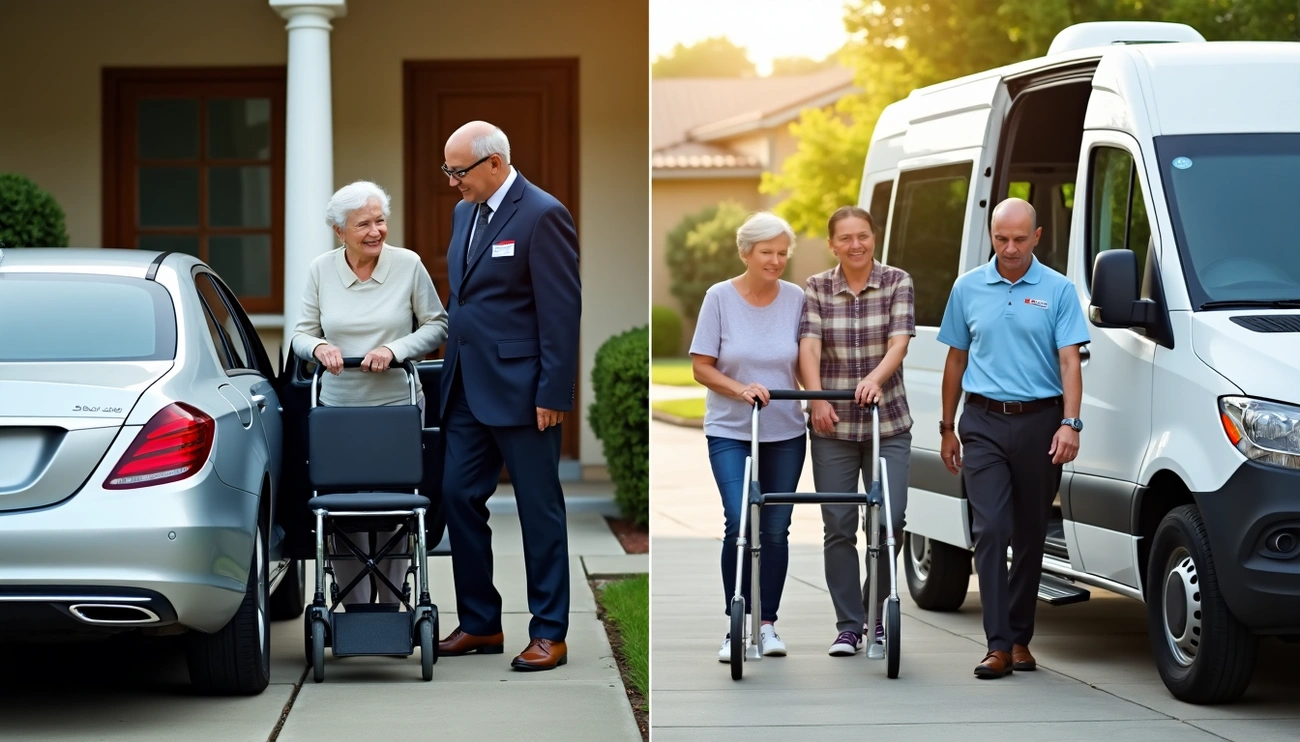Senior cohousing communities are expanding across America as the global population ages rapidly, with one in six people projected to be over 60 years old by 2030. The number of seniors worldwide is expected to jump from 1 billion in 2020 to 1.4 billion by the end of this decade.
The U.S. faces an even more dramatic demographic shift, with adults over 65 projected to reach 82 million by 2050, representing 23% of all Americans. This growing demographic requires new approaches to housing and community design.
Health researchers have found that loneliness among seniors carries risks comparable to obesity or smoking 15 cigarettes daily. Senior cohousing directly counters this health threat. Approximately 170 active senior cohousing communities currently operate across the U.S., with roughly 140 more in development phases.
Studies show these living arrangements reduce social isolation and depressive symptoms while promoting physical mobility and daily activities for older adults. The communities typically feature private homes clustered around shared spaces including communal kitchens, libraries, and exercise rooms.
This design allows residents to maintain independence while benefiting from built-in social networks and support systems. Unlike traditional retirement facilities, these communities emphasize resident autonomy alongside intentional community-building.
The following article examines why senior cohousing continues gaining popularity as an alternative to conventional retirement options, explores daily life in these communities, and highlights the emotional and physical benefits making this model increasingly attractive for aging Americans.
Why Senior Cohousing Is Gaining Popularity
Baby boomers across America are reimagining their golden years, driving remarkable growth in senior cohousing communities. This trend reflects changing attitudes about what makes for fulfilling later-life living arrangements.
The rise of aging-in-place alternatives
The traditional “aging in place” mantra—staying in one’s longtime home—remains popular among older adults, with approximately 88% of people ages 50 to 80 considering it important. However, many seniors are unprepared for the challenges this presents. Data shows older adults are increasingly single and either have no children or live far from family members, creating significant demand for supportive living arrangements.
This demographic reality has sparked innovation in senior living models. The “forgotten middle”—those who can’t afford luxury retirement options but don’t qualify for subsidized housing—is expected to grow to nearly 16 million by 2033. Senior cohousing directly addresses this demographic challenge.
The cohousing structure aligns with baby boomers’ priorities for their retirement years. Unlike traditional assisted living facilities, senior cohousing communities (SCCs) typically consist of 10 to 40 individual homes joined by shared common spaces. This arrangement preserves independence while creating built-in support networks that many older adults seek.
How communal living for seniors reduces isolation
Health researchers have established that loneliness carries risks comparable to smoking 15 cigarettes daily. More than one-third of adults 45 and older report feeling lonely, and nearly a quarter of those 65+ are considered socially isolated, presenting a significant public health concern.
Senior cohousing communities combat this problem through several design elements:
- Physical layout promotes interaction: The neighborhood design is configured to maximize spontaneous encounters between residents
- Regular communal activities: Many communities organize several shared meals weekly
- Meaningful engagement: Residents participate in community governance and maintenance
- Mutual support systems: Neighbors help with practical tasks like transportation and errands
Research published in Public Health Reviews found that “communal living arrangements reduce feelings of loneliness and increase perceived wellbeing among the senior population compared with residents living in single arrangements”. Six months after moving into one cohousing community, every resident reported daily or weekly interactions with neighbors, compared to just 30% before.
The combination of independence with community support makes senior cohousing particularly attractive as America’s population ages.
What Life Looks Like in a Senior Cohousing Community
Senior cohousing communities blend traditional neighborhood living with intentional design elements, creating environments where residents maintain independence while fostering regular social connections.
Private homes with shared spaces
Architect Laura Fitch describes cohousing as “privacy within your home and community at your doorstep”. These developments typically feature individually-owned private homes or condominiums, each with complete kitchens and living areas.
The Common House serves as the physical and social heart of these communities, housing a large dining room, kitchen, lounge, and often guest accommodations. Outdoor areas feature patios, gardens, and walkways specifically designed to encourage spontaneous interactions between neighbors. Many communities incorporate additional shared amenities like workshops, libraries, and exercise facilities where residents gather throughout the week.
Daily routines and spontaneous interactions
Daily life in cohousing communities centers around casual encounters in shared spaces. Communal kitchens often function as social hubs where residents enjoy morning coffee together. Throughout the day, many participate in community maintenance or gardening activities that strengthen neighbor relationships.
Shared meals represent a cornerstone of cohousing life, reports show. Most communities organize regular communal dinners in the Common House. These gatherings extend beyond simple dining experiences, providing opportunities for residents to share daily experiences and foster deeper community bonds. These routine interactions help nurture the relationships that form the foundation of community life.
Balancing privacy and connection
Despite their communal orientation, successful cohousing communities recognize the critical importance of personal space. Residents maintain complete autonomy over their schedules and private homes. The design process deliberately creates transitions between public and private areas—front porches frequently serve as that crucial intersection where the “magic of private/public space happens”.
Quiet areas distributed throughout the property provide spaces for solitary reflection. During the community planning phase, future residents specifically address privacy boundaries, ensuring all perspectives are considered. This careful attention to balancing connection with solitude makes cohousing particularly appealing to those who value independence while recognizing the benefits of regular social interaction.
Emotional and Health Benefits of Cohousing for Seniors
Studies reveal significant connections between living arrangements and health outcomes in older adults. Growing evidence points to senior cohousing as a particularly health-promoting environment, offering substantial advantages over traditional housing options.
Improved mental well-being through social bonds
Research confirms that communal living arrangements substantially reduce feelings of loneliness among seniors. Senior cohousing communities can decrease social isolation risk from 25% to less than 10%. This reduction represents a critical health intervention, as one in three Americans over age 45 reports experiencing loneliness.
The mental health benefits extend beyond proximity to neighbors. Residents in these communities report greater autonomy, increased opportunities for community participation, and stronger feelings of solidarity—factors that contribute to measurable quality of life improvements.
“Having strong interpersonal relationships and belonging to a community of like-minded people is at the heart of how social support fights depression and loneliness,” one researcher explains. Senior cohousing creates multiple layers of meaningful relationships, establishing what experts describe as “systems of care based on meaningful relations, not on services”.
Physical health support through mutual care
Physical health advantages emerge through both structured and spontaneous support networks. Many cohousing communities establish “health buddies” who exchange house keys and perform regular check-ins. Residents receive practical assistance including transportation to medical appointments, meal preparation during illness, and help with daily tasks when needed.
Some communities adopt a “preventative health and wellbeing” [link_5] approach, recognizing that mutual support functions as a buffer against declining health. This proactive strategy enables residents to maintain independence significantly longer than might otherwise be possible.
Feeling valued and needed in later life
Senior cohousing addresses a fundamental human need—feeling purposeful. Residents report that providing assistance to others creates feelings of being “worthwhile and needed”. This reciprocal dynamic generates vitality and openness to new perspectives.
An 84-year-old resident describes her experience: “All the children in the neighborhood know who Miss Ruthie is. I talk to them, I play with them. They trust me and I love them”. For many seniors, these relationships provide purpose and direction, becoming “as meaningful as any they have ever had”.
The cohousing model enhances well-being through multiple psychosocial health determinants, creating a comprehensive approach to aging that traditional housing arrangements cannot replicate.
The Future of Senior Cohousing in 2025 and Beyond
Senior cohousing continues to evolve rapidly as demographic shifts and design innovations reshape the landscape heading into 2025. Baby boomers turning 65 at a rate of 10,000 daily throughout this decade fuel growing demand for living arrangements balancing independence with community support.
Trends in multigenerational and senior-only models
Senior-only communities currently represent the fastest-growing segment of cohousing, though intergenerational models show significant growth. Industry research indicates intergenerational designs increase socialization opportunities, support lifelong learning, and create stronger community bonds. Many older adults specifically seek communities where residents span multiple generations, from young families to people in their 80s.
The business argument for intergenerational programming includes market differentiation and faster sales cycles. Senior communities in 2025 will increasingly feature public-access amenities like coffee shops, restaurants, and farmers markets—creating natural spaces for cross-generational interactions.
How technology is enhancing independent living
Technology advancements are reshaping senior cohousing communities in 2025. Smart home technologies and telemedicine services enable residents to manage their healthcare more actively through personalized wellness programs. Artificial intelligence and predictive analytics improve marketing approaches while creating customized experiences based on individual health needs and lifestyle preferences.
Technology supports community connections through:
- Digital platforms promoting social interaction and virtual events
- Voice-activated devices simplifying daily tasks and offering hands-free control
- Emergency response systems built directly into home design
These technological features significantly extend residents’ independence—a key factor making cohousing attractive to tech-comfortable older adults seeking alternatives to traditional care environments.
Why cohousing is a sustainable solution for aging populations
Cohousing provides a particularly sustainable model for addressing aging population needs. The economic benefits come through shared resources reducing individual costs, while socially, built-in support networks decrease reliance on external services. Unlike corporate-managed retirement facilities, cohousing communities operate through member self-governance and decision-making—reducing expenses while strengthening community bonds.
Cohousing directly addresses what health experts call the “loneliness epidemic,” with studies showing isolation damages health comparable to tobacco use or obesity. The intentional community design creates natural social interactions that reduce institutional care needs, potentially easing burdens on already strained healthcare systems.
Conclusion
Senior cohousing addresses multiple challenges facing America’s aging population by combining independence with community support. Research demonstrates these intentional communities effectively combat isolation while providing practical support systems that allow residents to remain in place longer than traditional housing arrangements. The design balances shared spaces for spontaneous interactions with private homes that preserve resident autonomy.
Health studies confirm the benefits extend beyond social connections. Residents in cohousing communities show reduced rates of depression, develop purposeful reciprocal care relationships, and establish safety networks traditional housing models cannot duplicate. These documented advantages explain why both senior-only and intergenerational models continue gaining popularity nationwide.
The 2025 outlook for senior cohousing appears promising as smart technology integration makes aging in place more accessible and comfortable. The self-managed structure offers economic advantages over corporate-run retirement communities through shared resources and resident-controlled decision-making.
Built-in support networks reduce dependency on external healthcare services, potentially relieving pressure on overburdened medical systems while creating more satisfying living experiences for residents.
Baby boomers, who have reshaped each life stage they’ve entered, now pioneer communities balancing privacy with connection and independence with support. Their experience demonstrates that later years need not default to isolation or institutional care.
The cohousing model shows community, purpose, and autonomy can coexist effectively—offering a sustainable approach for generations to come.
FAQs
Q1. What are the main benefits of senior cohousing? Senior cohousing offers a balance of independence and community support. It reduces social isolation, improves mental well-being through social bonds, and provides mutual care systems that support physical health. Residents often report feeling more valued and purposeful in their later years.
Q2. How does senior cohousing differ from traditional retirement communities? Unlike traditional retirement communities, senior cohousing communities are typically self-managed by residents. They feature private homes with shared common spaces, encouraging spontaneous interactions while maintaining personal autonomy. Cohousing also tends to be more cost-effective due to shared resources and decision-making.
Q3. Is senior cohousing suitable for everyone? While cohousing offers many benefits, it may not be ideal for everyone. Those who highly value privacy or struggle with frequent social interaction might find the communal aspects challenging. It’s important to consider personal preferences and lifestyle when deciding if cohousing is the right fit.
Q4. How are technology and smart home features integrated into senior cohousing? By 2025, senior cohousing communities are expected to incorporate various technologies to enhance independent living. These may include smart home devices, telemedicine capabilities, AI-driven personalized experiences, and digital platforms for social interaction. Such innovations aim to extend independence and improve quality of life for residents.
Q5. What financial considerations should be kept in mind for senior cohousing? While cohousing can be cost-effective due to shared resources, there are still financial considerations. Most residents use personal savings, Social Security income, pension payments, or proceeds from selling their previous home to cover expenses. It’s important to carefully evaluate the costs involved and compare them with other senior living options.












